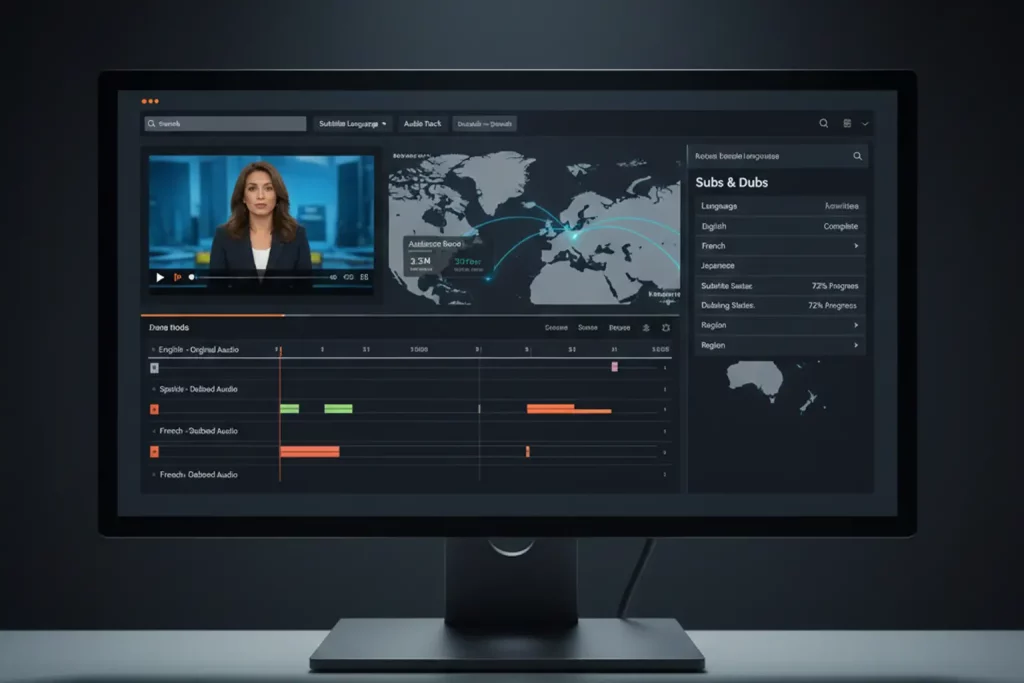Video as the mode for content creation has existed for a long time, but it saw a natural upward swing in 2020. The unprecedented growth in video content consumption last year paved the way for brands and organizations to use video marketing as an effective way to connect with their audience and viewers.
According to a study by Cisco, “by 2022, online videos will make up more than 82% of all consumer traffic – 15 times higher than it was in 2017. In continuation with these studies, Statista report stated that as of 2020, 83.3% of internet users in the USA accessed digital video content.
Even as the world is starting to get back to business as usual, video marketing has taken off big time. According to Wyzowl’s report, 79% of people say they are convinced to buy a product or service after watching a video. The report further states that 85% of businesses use video as a marketing tool and 92% of marketers view video marketing as an essential part of their overall strategy.
Search engines like Google are acknowledging the growing prominence of videos. Search engines evaluate how videos deliver a high click-through rate and increase session time; thus, they rank pages with videos higher.
What is Video SEO?
As we have read above, video is a powerful way of storytelling and engaging the readers with your brand. If video marketing is incorporated correctly in the overall SEO strategy, it delivers significant gains and ROI in more than one way. In simple terms, video SEO optimizes the video to be indexed and ranked on search engines for relevant keyword searches.
How does video marketing improve SEO?
Video improves the value of content for Google –
When submitting content to Google, two things are essential – the quality of content and its relevance to the search query. When indexing and ranking content for keywords, Google doesn’t consider the text or the other media that the page offers. Updating the page with the combination of text, image, and video helps Google to identify that your content is valuable. The trick is to ensure that video content is optimized for SEO in keyword research and adding those keywords to your video meta tags.
Video generates traffic –
With 300 hours of video upload every minute and daily consumption of approximately 5 billion videos, YouTube is the second biggest search engine right behind Google. Third-party hosting sites can leverage YouTube to drive traffic to your webpage or website. This also makes YouTube a fantastic platform to expose your business to new clients. People are more likely to visit a website after watching a video on YouTube or other social media sites.
Video improves user experience –
One of the biggest pros of having a video is that it keeps people on your site for a long time. Videos are visually engaging, and they enable in enhancing the user experience. An engaging and relevant video and other forms of content can keep the viewer on the website or the desired webpage for a more extended period. Video SEO helps improve the bounce rate, allowing search engines like Google to place your content higher up in their rankings.
Video content earns backlinks –
Videos have proven to be a great way to earn backlinks. With more than 90% of people sharing the videos they watched, video marketing is a perfect tool to achieve links. A higher number of social shares result in a higher ranking on search engine pages. Studies reveal 46% of all the site rankings are determined by shares and links. Including URLs in the channel information or video descriptions on YouTube and other social media platforms is the perfect opportunity to earn qualified referral traffic.
Video improves conversion rates –
In a study, HubSpot revealed that people are nearly two times more likely to purchase after viewing the product videos. This is an excellent indicator for you to incorporate video marketing into your SEO strategy to drive sales.
How to optimize video marketing for SEO?
Curate video content that meets audience needs –Videos that resonate with your brands’ audience are always a win for you. For any video to rank well in the search engines, it should connect well with its intended viewers. Before creating any video, it is essential to research the viewer’s possible queries and tailor the video(s) that answer them. Defining your audience persona is a great way to know their requirements and create video content accordingly.
Decide on the hosting platform – While choosing a hosting platform for your video(s), it is crucial to analyze the purpose of this video. What do you want to achieve with this video – is it to gain traffic? Are you looking for leads? Or are you posting the video for brand awareness? If you are looking for branding, then third-party hosting sites YouTube and Vimeo are the best options. However, if you are looking for leads and gaining traffic, hosting the video(s) on your website will deliver the desired results.
Add video transcript – Adding transcripts of your video on the same page will make it more accessible to the viewers and the search engines. Statistics suggest that 80% of people are more likely to finish the video with captions. Therefore, adding transcripts to the video is directly correlated to increasing the user experience. Add transcripts gives search engines more information about the video. Since search engines cannot read the video, the text in transcripts provides the context for the video to be ranked.
Looking for good transcription services, get in touch with our experts with all your queries.
Add engaging thumbnail – A thumbnail is as vital as the home page of the website. It is the first thing a viewer would notice when they come across your video. Studies state that videos with custom human thumbnails receive a 30% higher play rate than those without it. Hence, the thumbnail of your video should be compelling and relevant.
Add keywords in the video title and description – Keyword research is the core, which applies to video SEO. Keyword research comes in handy when writing the title and description of the video. The key is to write an engaging title and description without overstuffing it with keywords.
Integrate video SEO into overall SEO strategy – Creating excellent video content and promoting has many benefits – increasing user experience, increasing bounce time, earning quality backlinks, and boasting traffic. However, all this will be irrelevant if the rest of your web page’s content doesn’t match the video. Curate the content around the video and optimize the page for SEO for the webpage to be ranked organically.




